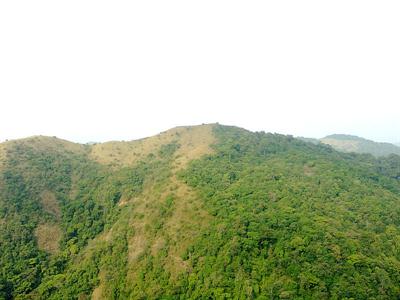Silent Valley, a National Eco Park of tourist attraction
Here is a short article featuring the Silent Valley National Park, a tourist attraction in Palakkad district, Kerala, with descriptions about its biodiversity and uniqueness as a tropical rain forest. Also preliminary information about its ecology, topography, weather, flora and fauna, etc. are provided.

When a visitor having some interest in ecology visit Kerala, his/her first inquiry will be about 'Silent Valley'. This is now known throughout the world as a synonym for environmentalists' success over those who plan developmental projects without giving any consideration for the ecosystem ant its importance.
The founding editor of 'Sanctuary Asia', Bittu Sahgal stated, "Silent Valley is a temple, not only because of the rich bio-diversity of plants, animals, birds and butterflies, and a rich ecosystem, but also because it's a storehouse of carbon." It is the only vestige of a virgin forest in the whole of Western Ghats, has a very important role in protecting the ecological condition of the area as well as protecting a very rich bio-diversity wealth for the posterity. The International Union for the Conservation of Nature and Natural Resources adopted a resolution at their General Assembly held in 1878 specifically urging the Government of India to conserve effectively the forest area of the Western Ghats, including the undisturbed forests of the Silent Valley in Kerala State.Location, topography and climate
The Silent Valley is in Palakkad district of Kerala located at 11° 5' 33" North, 76° 27' 15" East, nearest town being Mannarkkad 45 km south. The extent of Silent Valley reserve is about 8,952 hectares. Within this forest area several hills are there and the river Kunthipuzha originates from here and flows downwards to join with other small rivers Silent Valley. Average rain fall is 3,180 mm., more than the Kerala's average, 3000 mm. In July maximum rain, 885.6 mm., is recorded. Rain is less during January to March. Temperature varies between 29.44° C (May) and 7.04º C (January). The Tropical Evergreen Forest
India has very little area of tropical evergreen forest and the Silent Valley is perhaps the last substantial stretch. It has been established that tropical evergreen forests belongs to the most complex and diverse vegetation communities on earth. It is calculated that this climax natural formation came into being at least before fifty million years. The flora and fauna contents of this forest most complex in nature.
The type of animals in this forest is mainly depending on vegetables. Bird varieties are more generally, since the system of the forest is more suited for their adaptations. Arboreal type mammals are more abundant than terrestrial ones, since food resources are more confined to canopy. Mostly seen arboreal animals are Lion Tailed Macaque, Nilgiri Langur and Giant Squirrel. These animals are specialised to live in this particular eco system which is almost invariant throughout the year. Their existence in other areas with drastic changes in the ecosystem are found to be very difficult.
As far as vegetation is concerned almost all main varieties of plants are here, which belong to canopy, second storey and undergrowth. More than twenty plants have been identified which are present only in the Silent Valley. Among fauna population most of the mammals of Peninsular India have been identified here. Some most important among them are monkeys, cats, civets, mangooses, canids, bear, other martens, herbivores. About hundred species of avifauna have been identified here.
Among the animals three are endangered ones, tiger (Panthera tigris), lion tailed macaque (Macaca silenus) and Nilgiri Tahr (Hemitragus hylocrisus).Indira Gandhi National Park
The Silent Valley came into attention of the public mainly because of a Hydro- electric project proposed there by the Kerala State Electricity Board. The environmentalist came up with protest against this proposal, since the dam to be constructed as part of the project would submerge a large area of this evergreen project and thereby would destroy the richest bio-rich area, about 1,022 hectares, of which 950 ha will be from evergreen forest area.
Environmentalists throughout the country were against the proposed project and they organized campaigns in all forms including legal action. Finally the Central Government appointed a high level committee headed by Prof. M.G.K. Menon to look into the whole problem. Based on the report of this Committee, the then Prime Minister Ms. Indira Gandhi declared the Silent Valley as a National Park and ordered its protection. Naturally, the Hydro-electric project proposal was cancelled.
Now this National Park, named after Mrs. Indira Gandhi attracts tourists from all parts of the country. Arrangements have been made by the Forest department to see the forest during the day time. From a particular spot (Mukkali) the department takes the tourists in their own vehicle to the destination where a high tower has been constructed. Climbing over this tower a nice view of the whole forest area can be obtained. Strict discipline is expected from the sight seers. No plastic covers, food waste, etc. will be allowed there. Time schedule also will be strictly followed.

 Job oriented
Job oriented